I spent yesterday and today helping Neal and Susan pick their olives. They have 42 trees, most of them hundreds of years old, and this year it seems that the yields are around 18-20%, which is pretty decent. If we can pick more than 200 kilos, the mill will clean and squeeze them and they should get ~40 liters.
Friday it rained all day, so they couldn’t do any prep, which meant that things are a bit behind, given that they had a 4pm appointment at the mill today. Ah well… We returned in the morning to help some more.
So, what’s the deal?
The first thing that has to happen is getting long sheets of netting and big tarps set up below the trees.
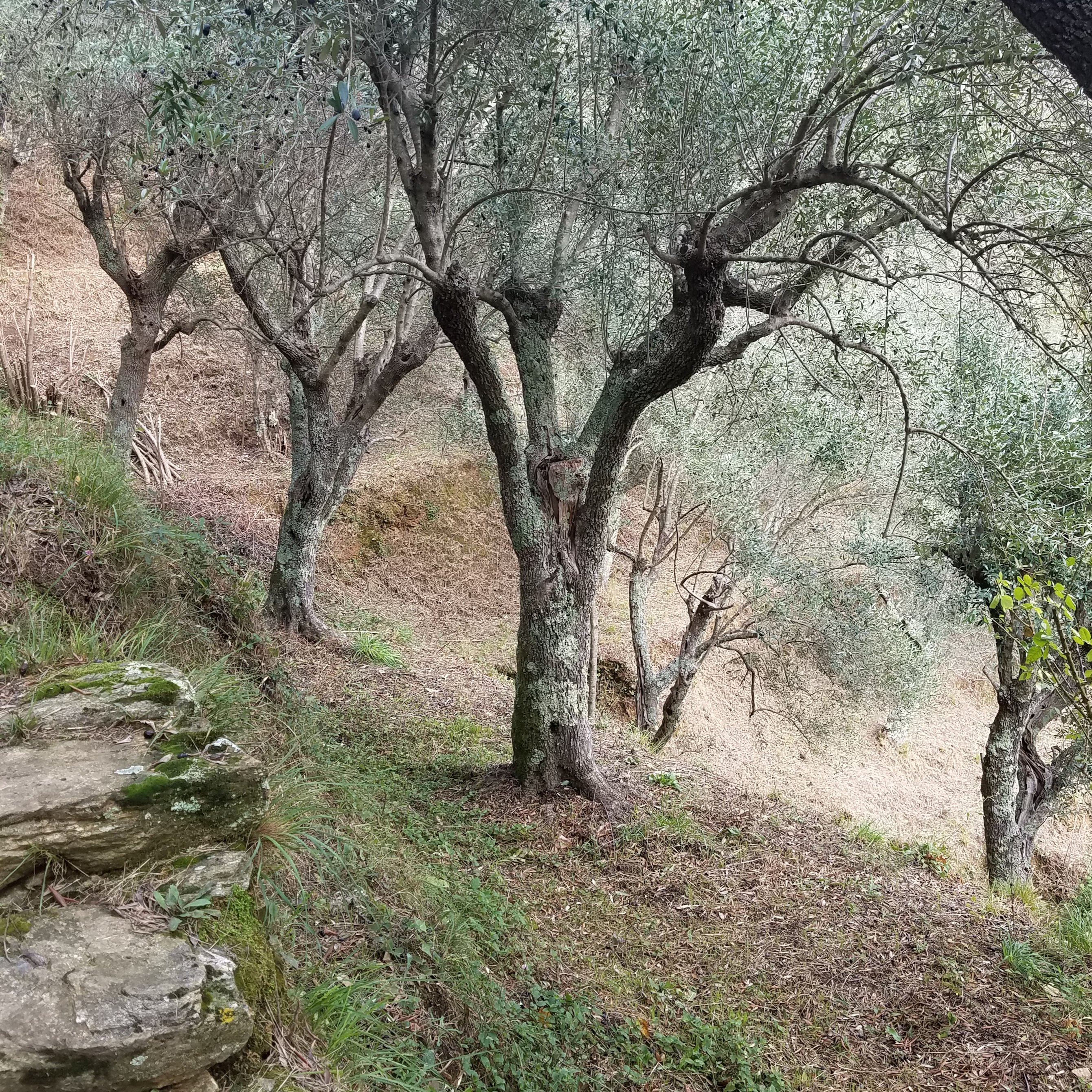
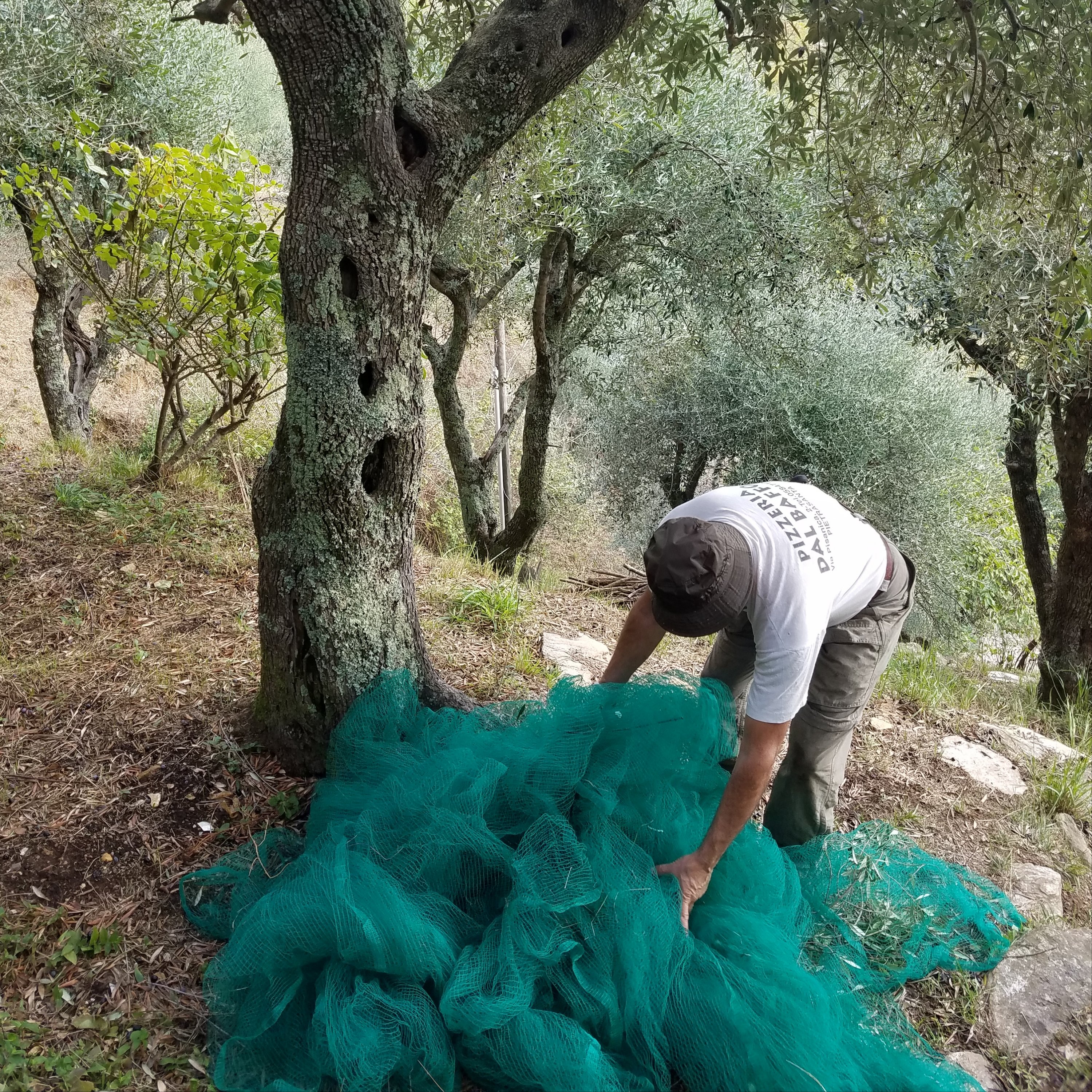
Next, we need to get at the olives. You can reach up with a tall rake or you can cut the branches down. Neal sends his son Teo into the trees to prune the branches. And some of Teo’s branches are huge and we have to recut them into smaller sections.
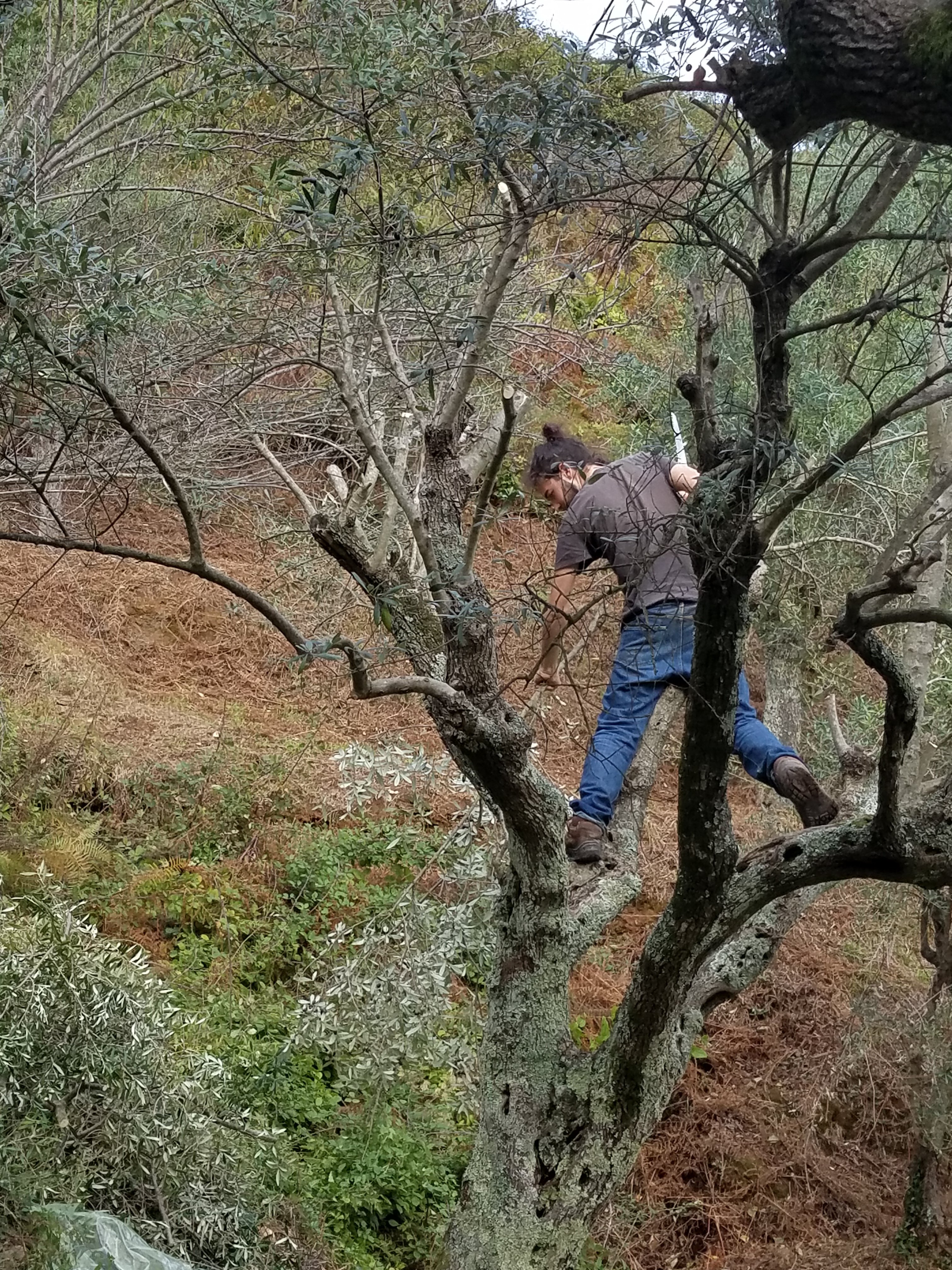
Then the helpers, like me, use small yellow or orange hand-held rakes to comb the olives out. Here’s Teo combing a branch:
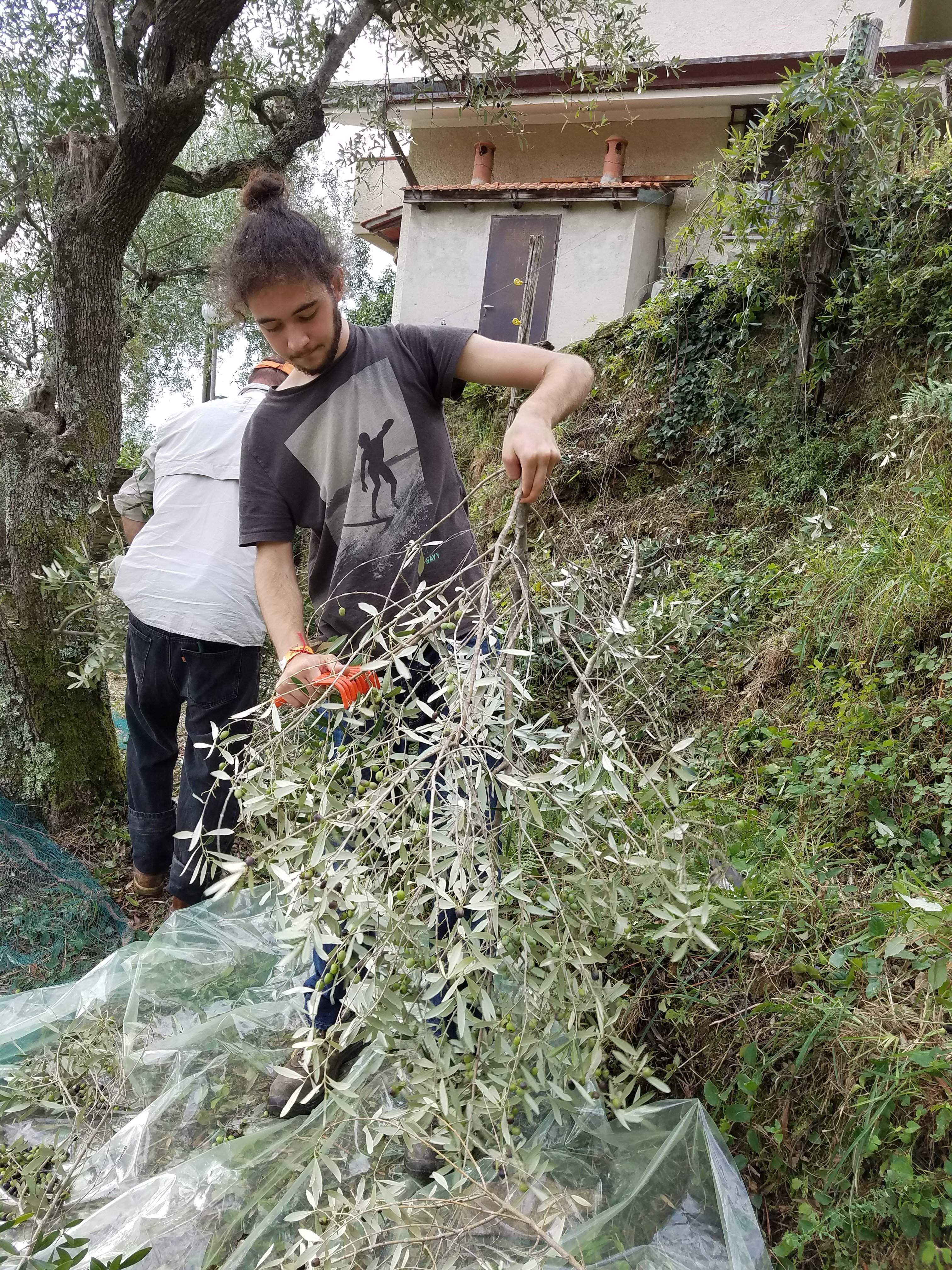
The olives pile up in the tarps and netting. When there are enough or we finish a row, we gather them up and pour them into a crate.
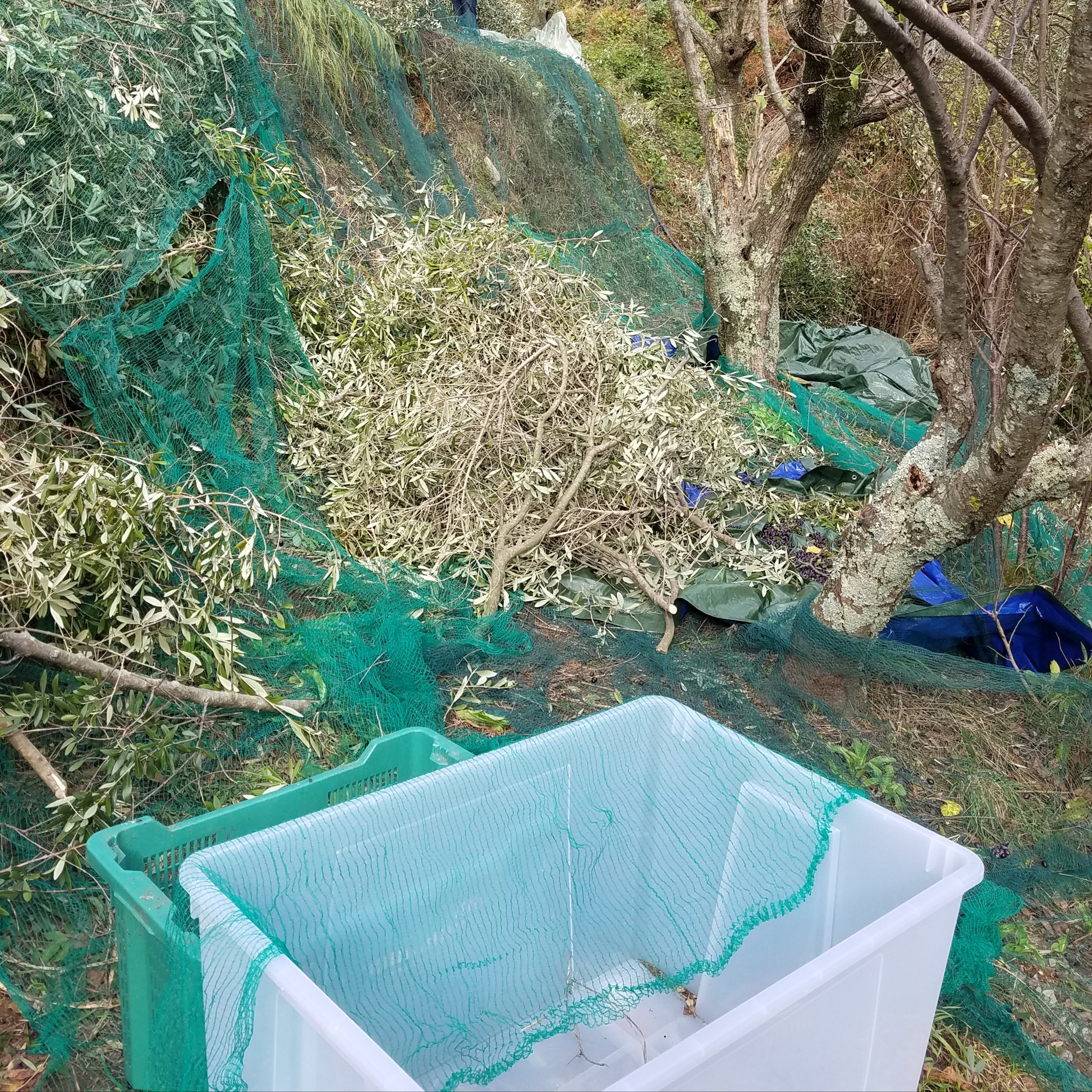
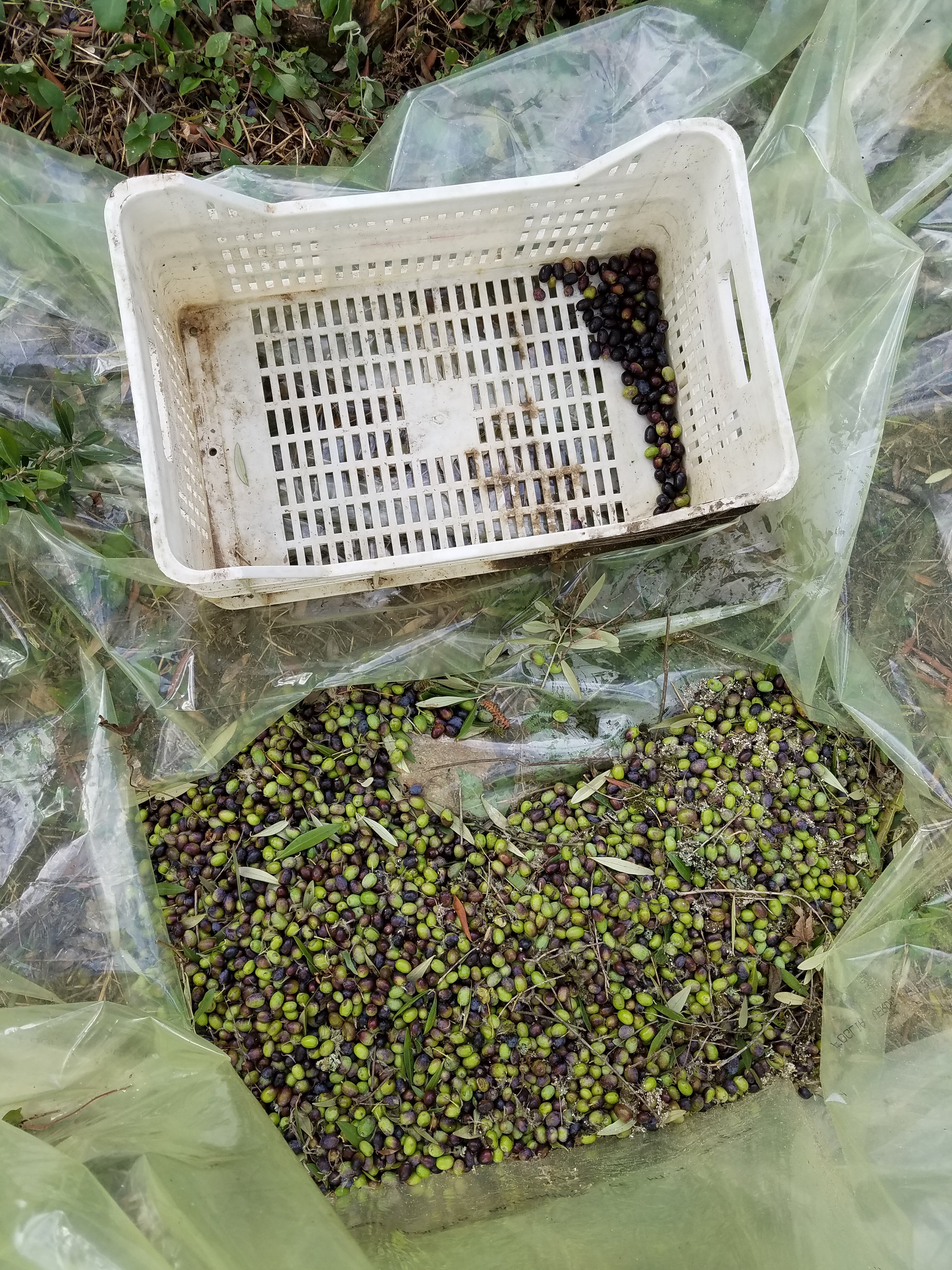
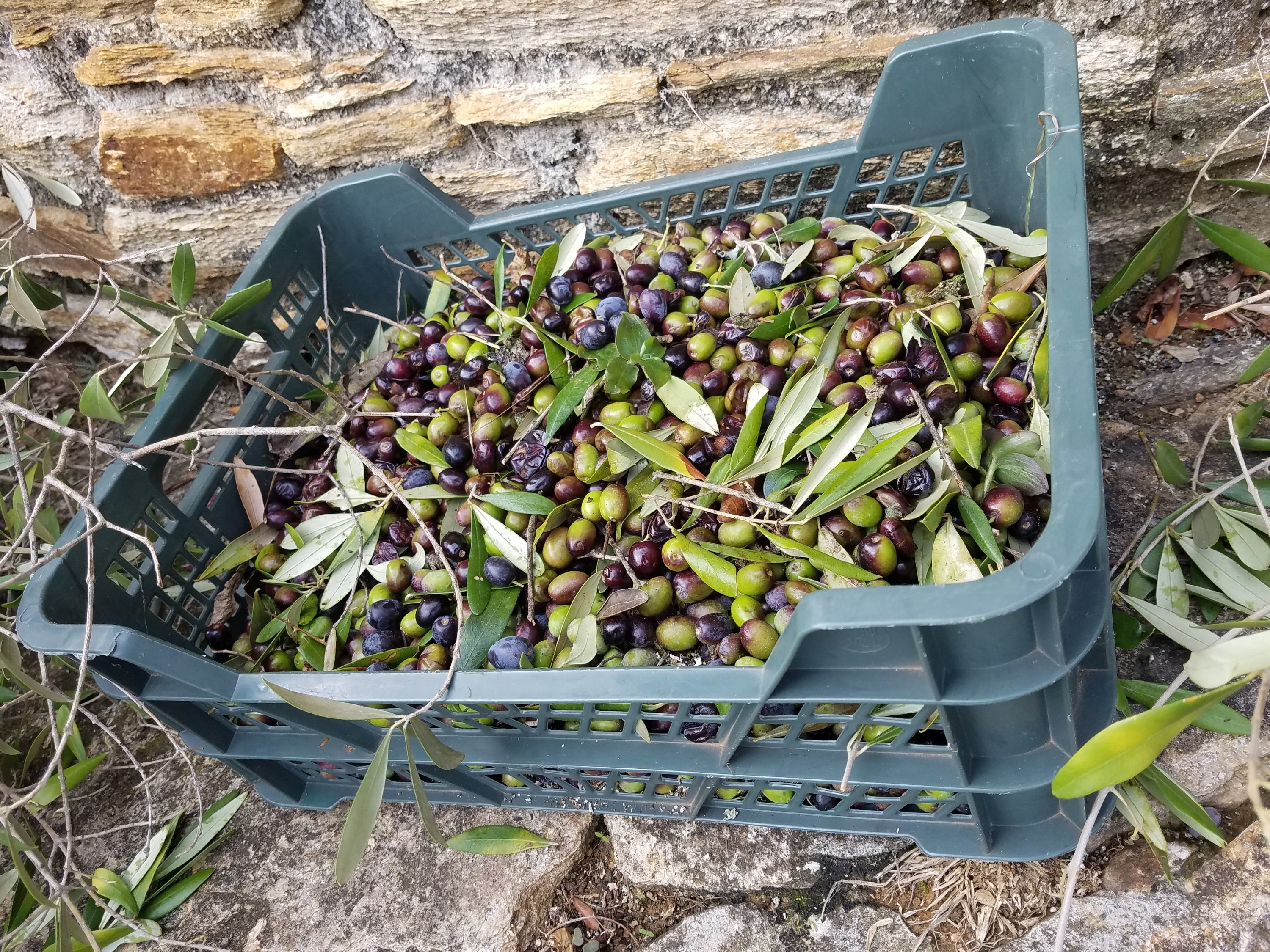
Yesterday the skies stayed clear and it got hot enough to wear shorts. When it was too dark to work, we went inside and shared lasagna and sausages and salad. By now we were 8 indoors and 4 boys outdoors. Great company!
[One footnote: early in the day, I happened to glance up exactly as a single olive fell down. Pop! Right into my eye. Pop went my contact lens out! Nowhere to be found. I looked and looked for ten minutes… But no. It was gone. Now and forever more, a little piece of me lives at Neal’s place.]
Today Birke and I arrived at ten with brioches. Susan made coffee. Teo and several of his pals were hard at work already. We settled in. Only a few trees to go. Rain tried to interrupt us, but we kept going. Finally there were no more trees to strip.
Then we cleared the nets and rolled them for next year. I raked the stone steps. Lots of olives landed on them and they were oily and slippery.
Lunch, then so many crates of olives in Neal’s car, it looked like a flat tire. The olive press is in Pietrasanta. It’s an unassuming building I’ve driven past a million times. Who knew?!
You dump all the olives into these huge crates. They weigh them and they have to be over 200kg if you want a private pressing and get your own oil back. Otherwise, you can dump them into the communal pile and get communal oil back.
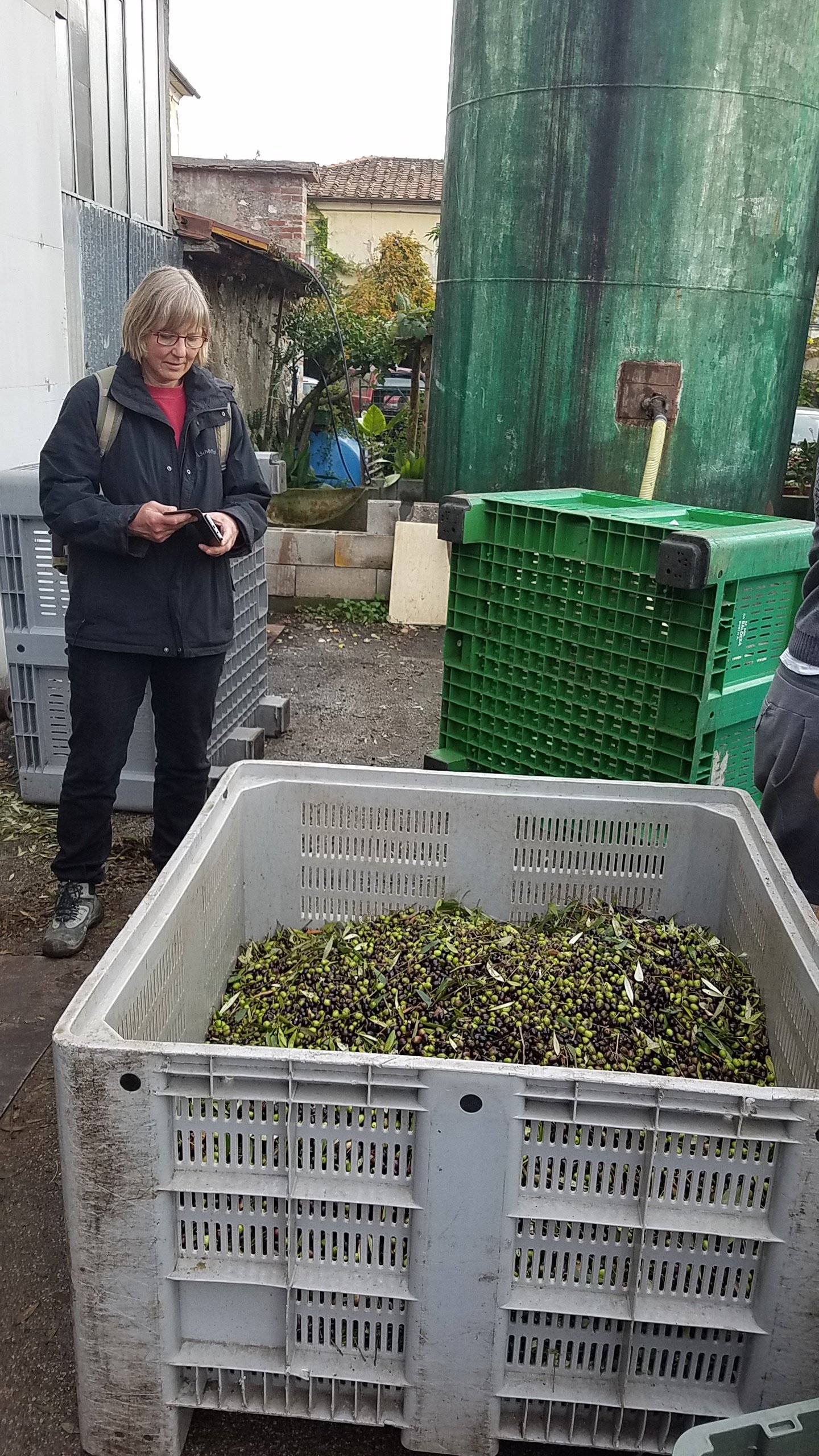
Inside is a huge pile of the dry squeezed olive meat. I don’t know what they do with it.
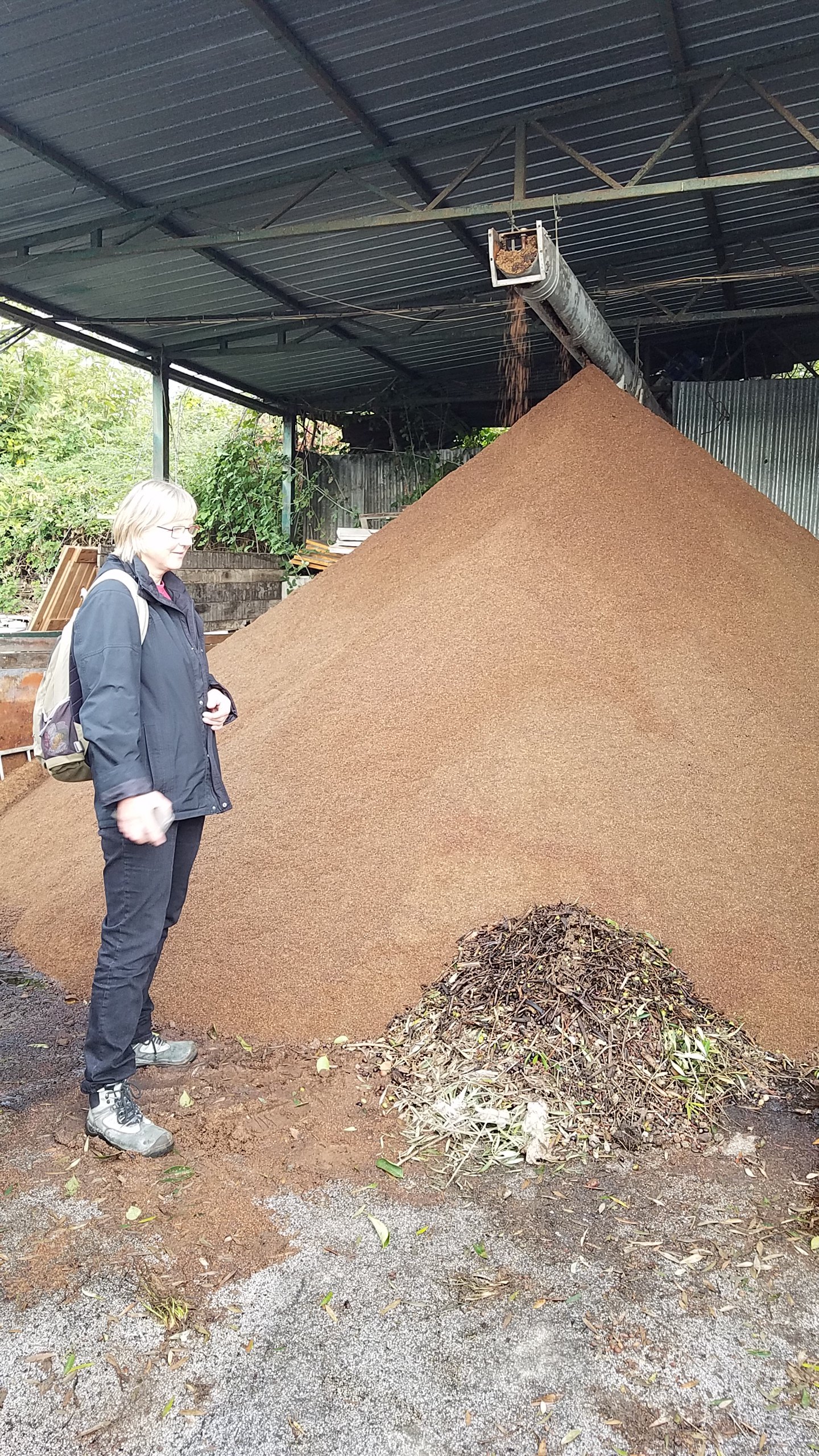
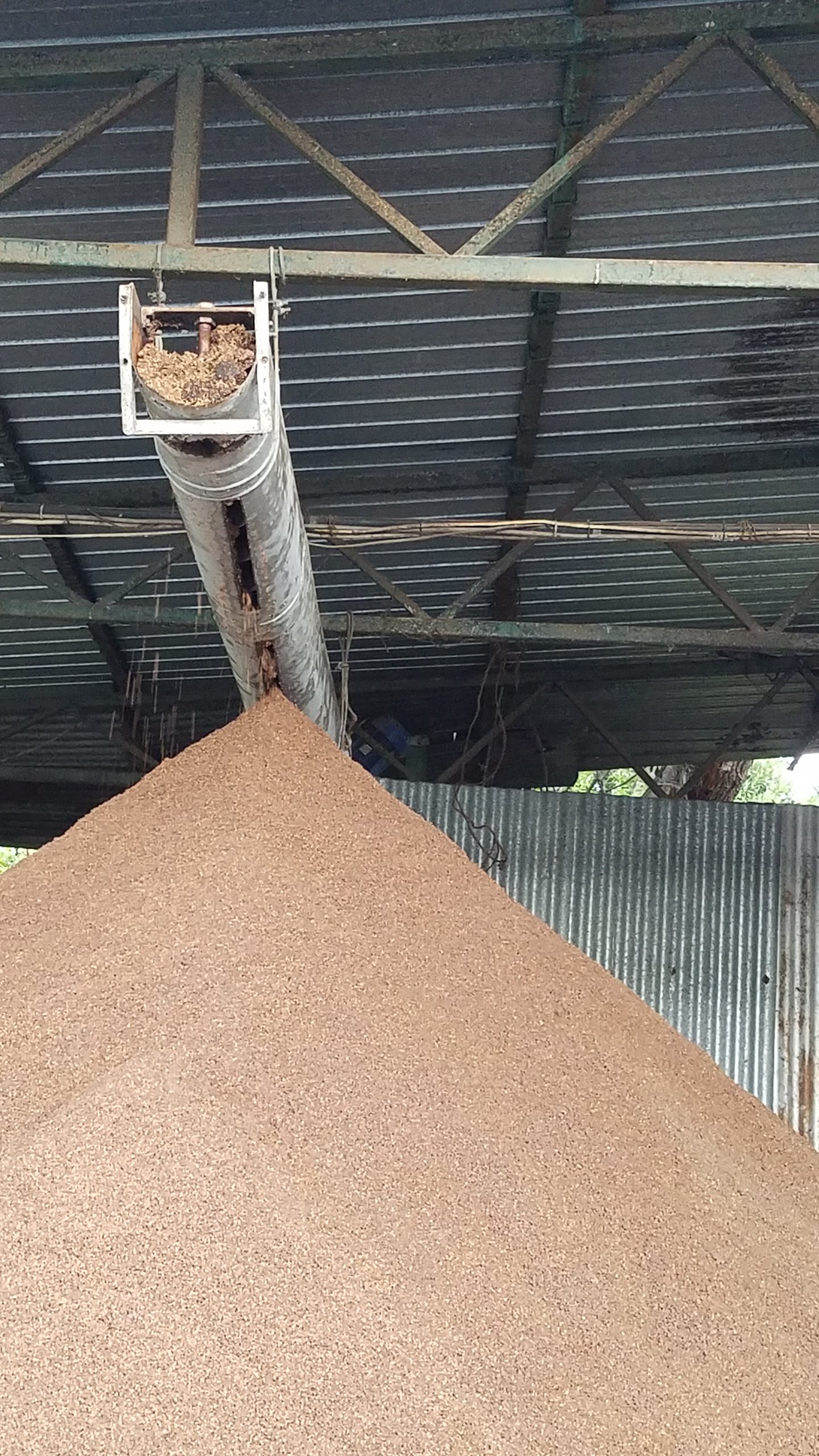
When it’s our turn, our crate is weighed. We were a bit under, but they know Neal, so it was okay.
The olives are dumped into a screened hole and they make their way up into the system like a water wheel.
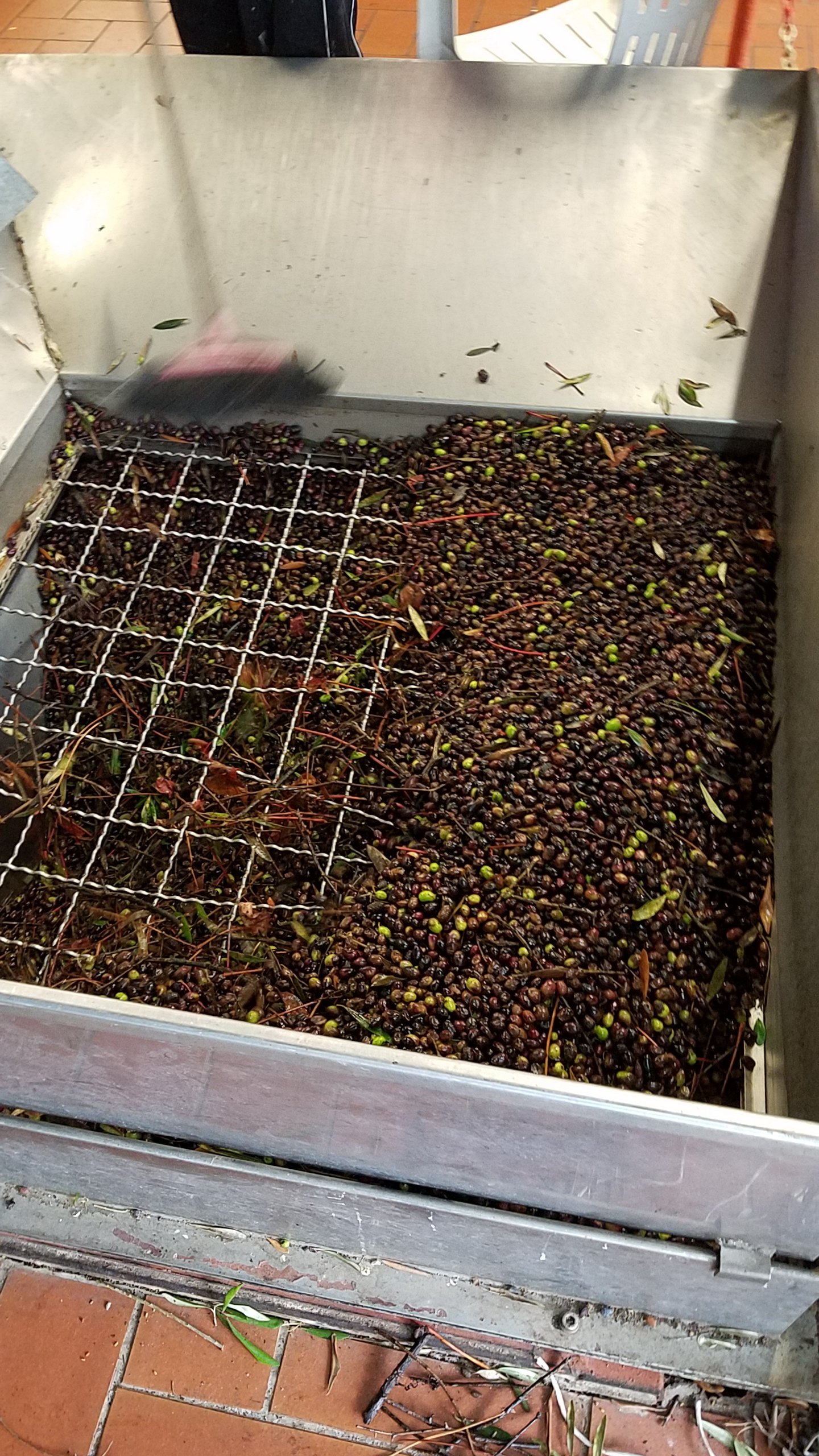
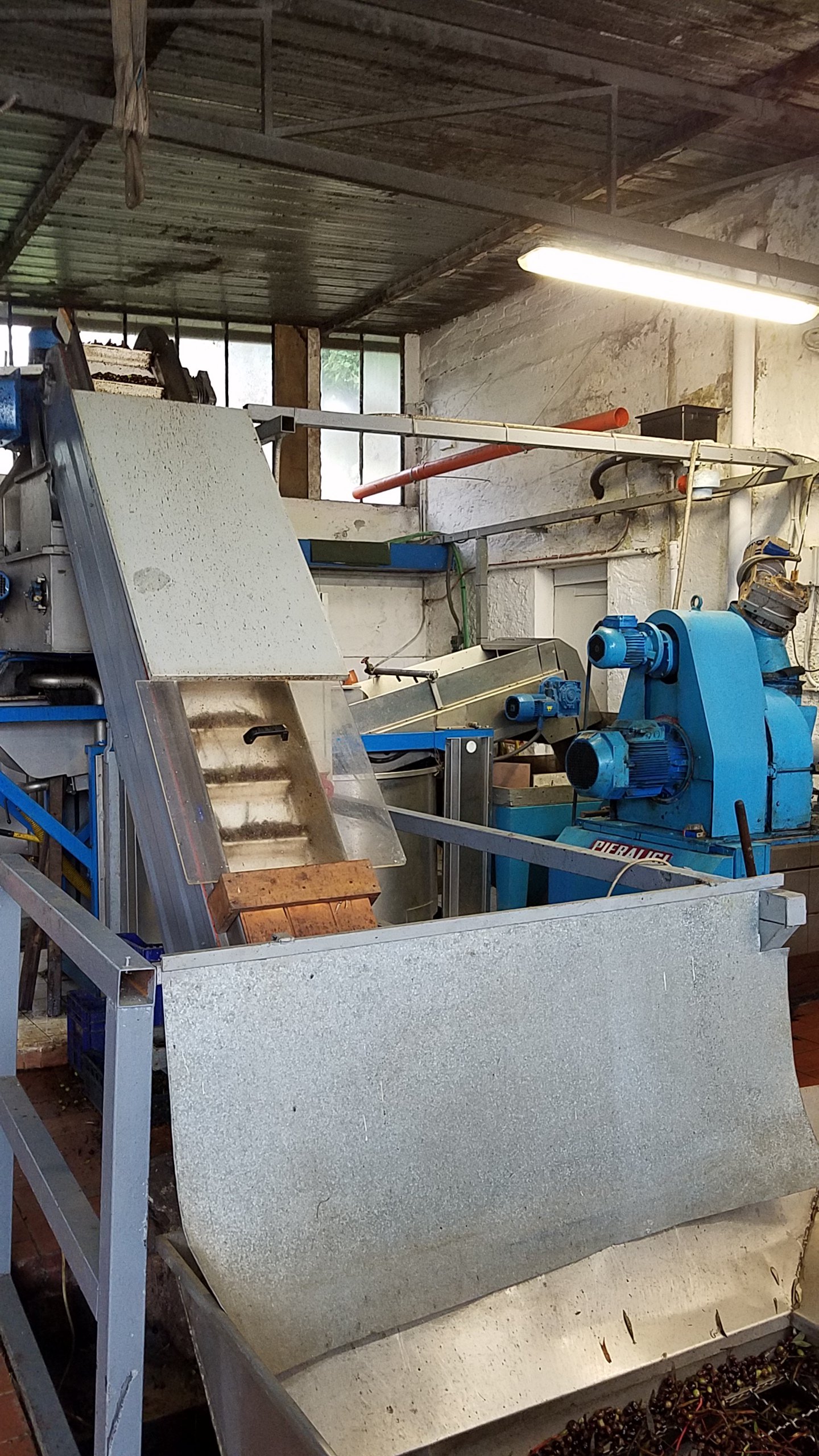
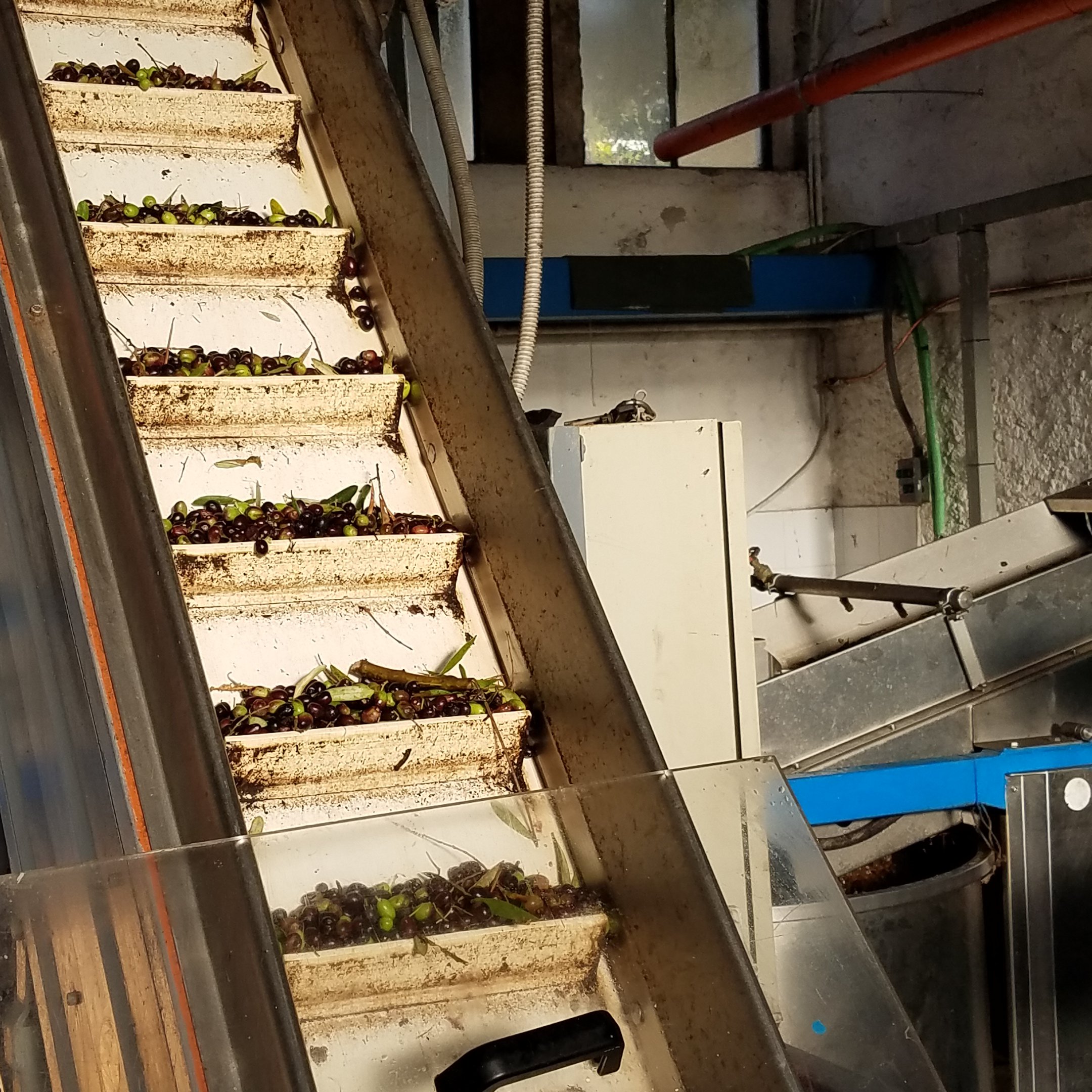
The leaves and twigs are cut out, the olives are cleaned and cleaned, the pits are removed, and the rest is squeezed dry. Then liquid gold comes out:
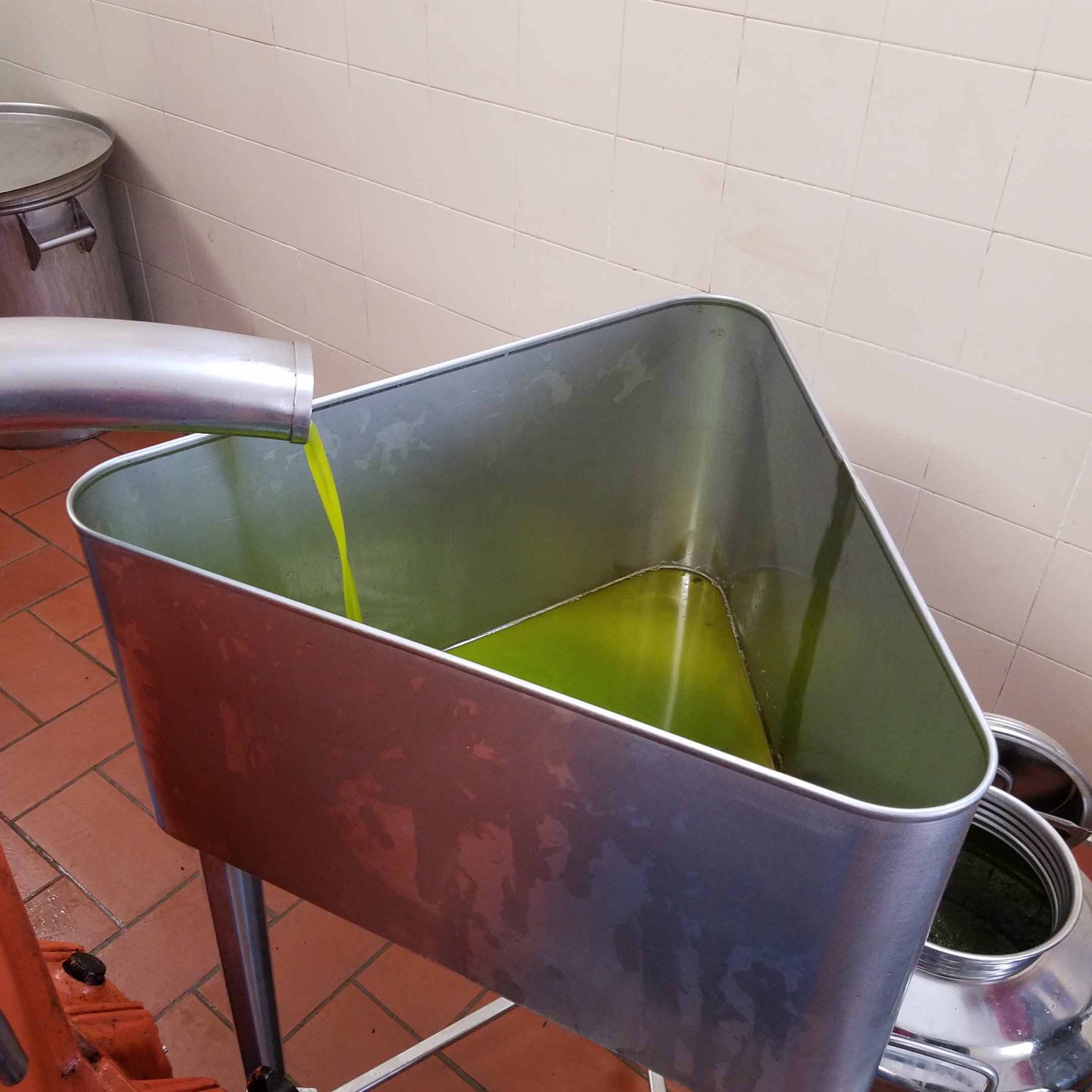
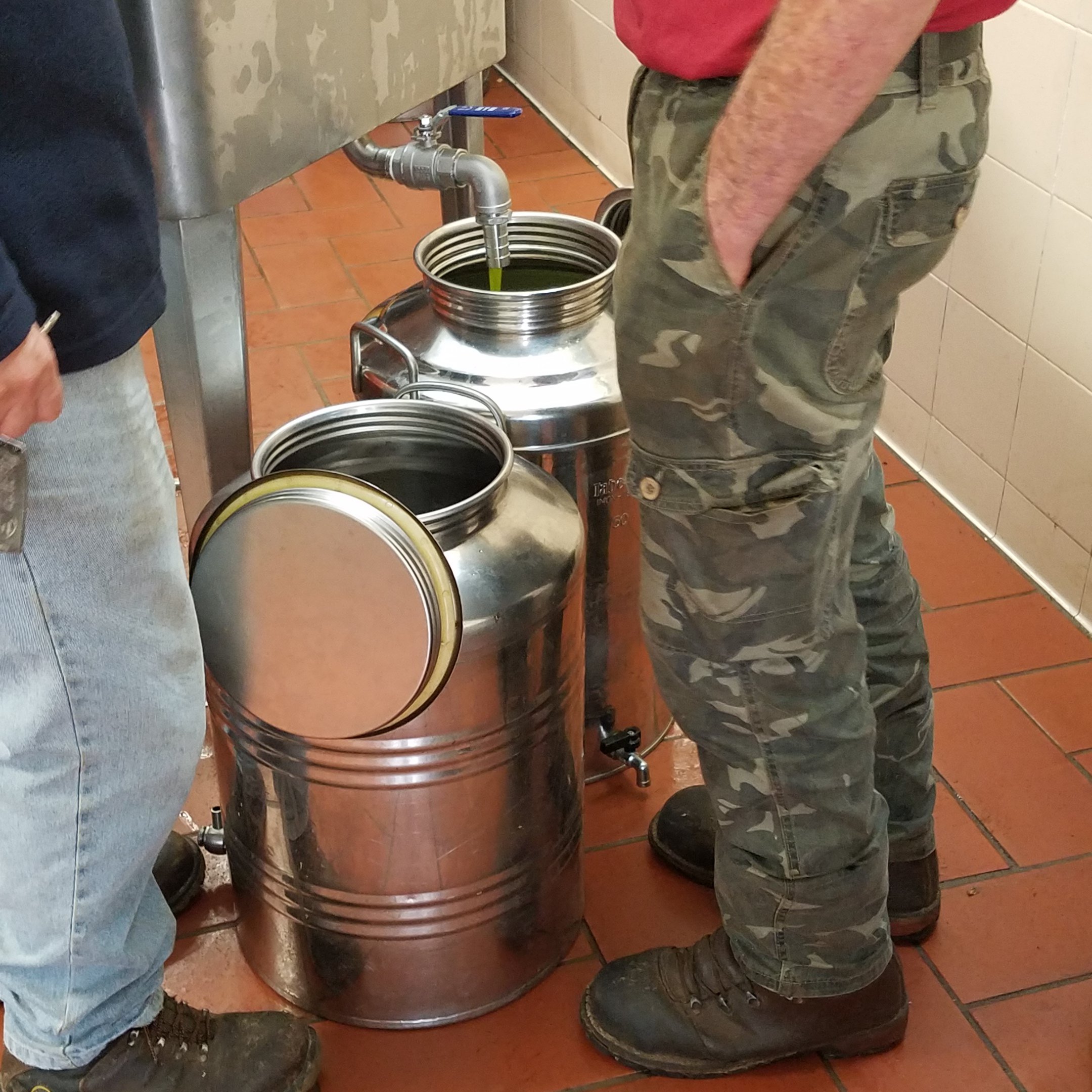
Neal gave me a bottle, so now I too have some liquid gold!
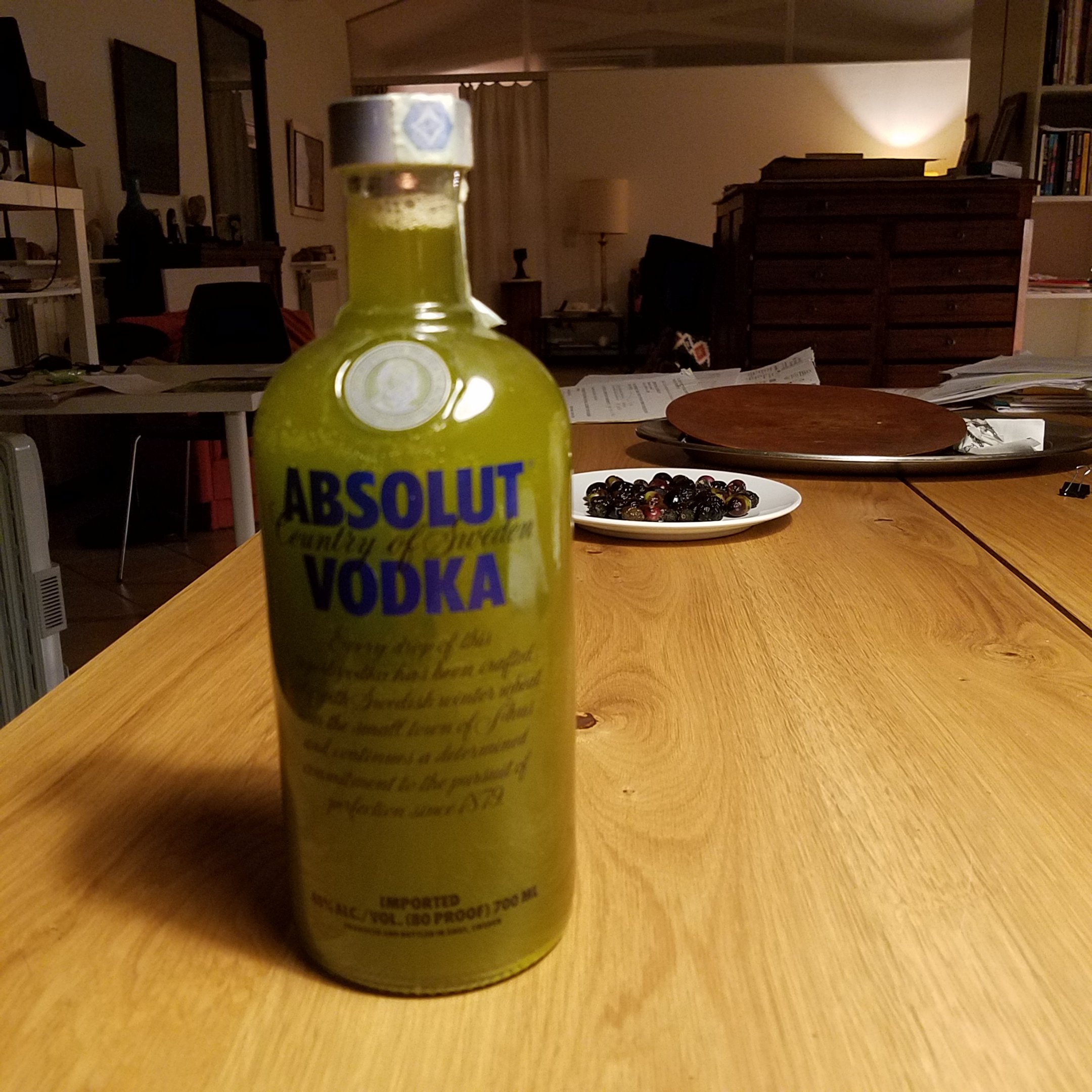
Net result, for those who care about the numbers, was that we only had 184 kg but the yield was 20%, so there were 36kg of oil! In the parking lot before he drove home, Neal poured some from the big steel container into glass bottles for each of us to take home with us. Yay!
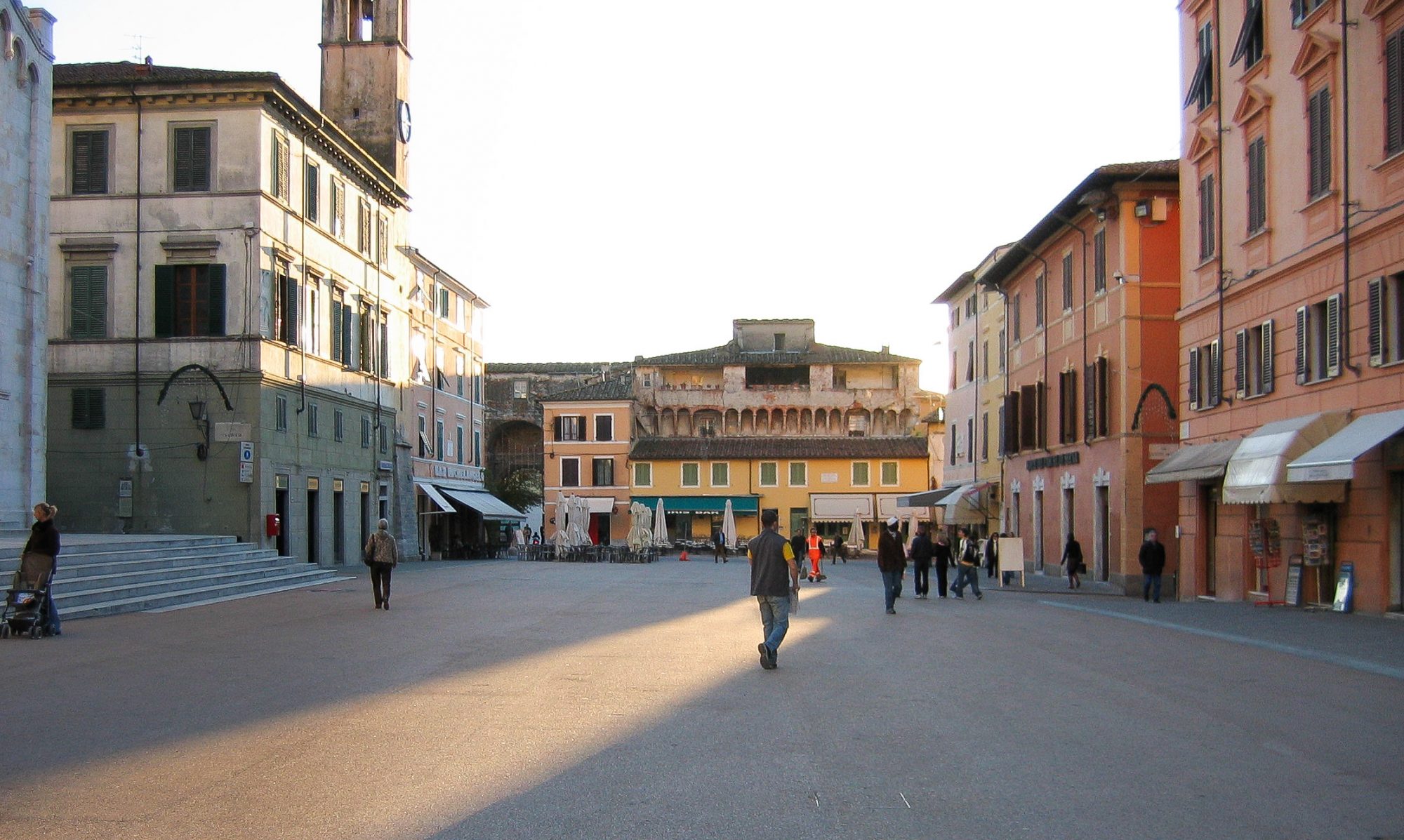
Oh looks like you had a great time xxx
I can taste it now…the oil not the vodka my friend
Olio nuvo -the best olive oil there is. pure and fresh.
How fun! I’d love to do this someday!
Your post about from olive picking to oil was informative but the most pleasant part was knowing the community that joins in to help with the harvest. You (and your contact lens) are part of that community.
Wonderful post Sanborn. Interesting process- and unlike wine you drive w olive oil the same day you bring in the fruit.
Wow quite a process! Thanks for sharing
That was a totally great explanation of olive oil making, Sanborn! Thank you!!!!
It’s so remarkably easy!
Yes, you’ve got it in one. The community part was the best part!
Heck yes! one of these days… plan a trip here in October/November and you’ll be wanted to help pick!
Pure and fresh and quick a dense green! very tasty: tried some on my bread last night. Yowza!
Doesn’t it look great in that fat bottle? I enjoy the contrast between the label and the contents!
Super fun… the picking and the visiting!